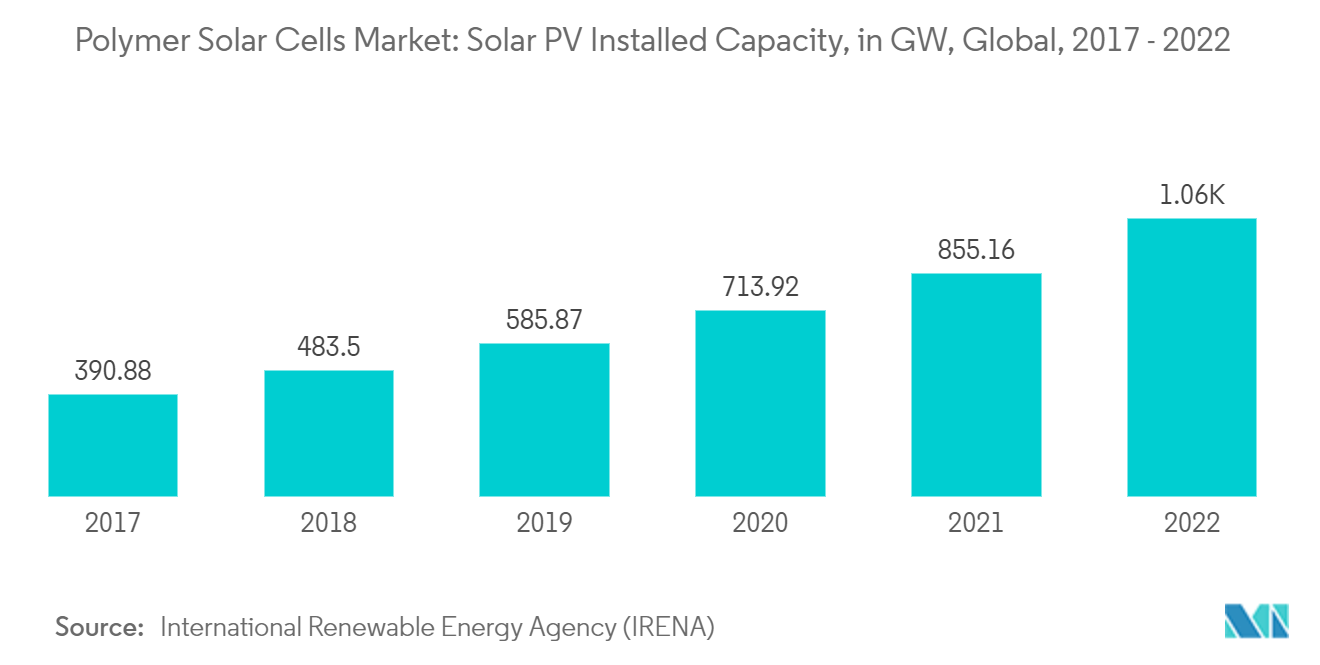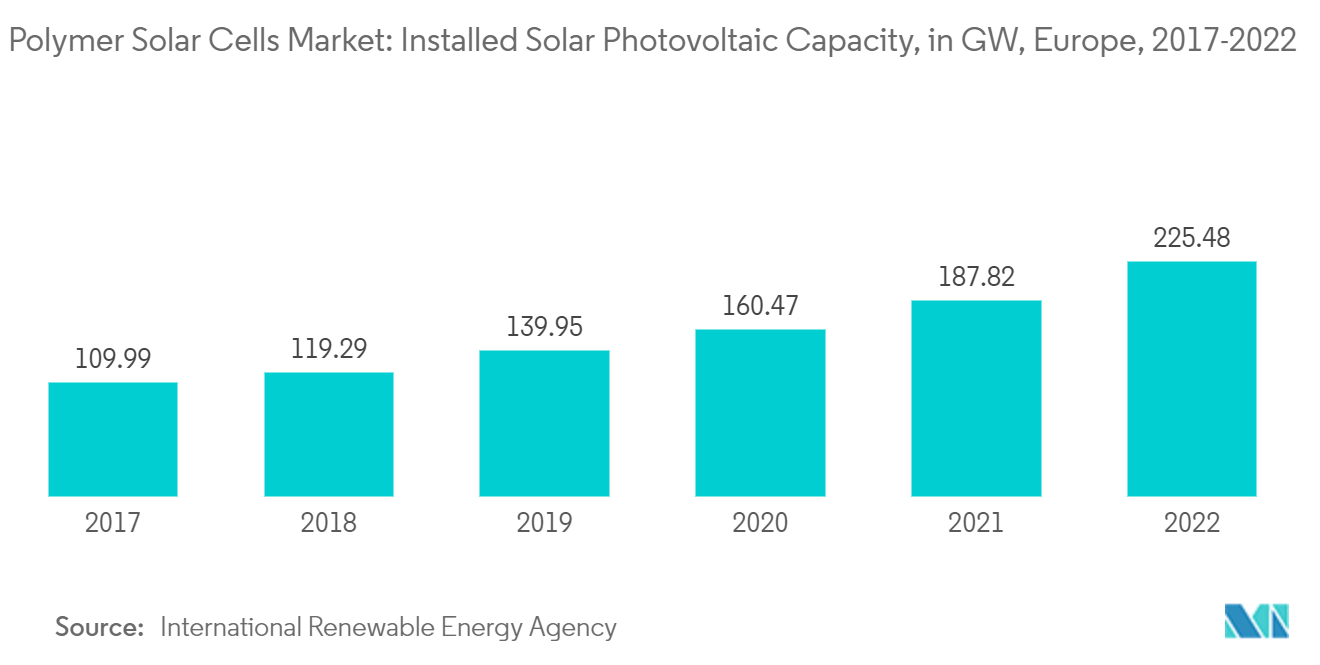Market Trends of Polymer Solar Cells Industry
Technological Advancements to Drive the Market
- Polymer solar cells, also called organic photovoltaic (OPV), are third-generation PV cells that use an organic polymer layer to convert light into electricity. Polymer solar cells are lightweight, flexible, customizable, and have a less adverse environmental impact.
- In 2022, global solar PV technology had a total installed capacity of around 1046.61 GW, growing by nearly 167.7% from 390.87 GW in 2017. With rapid improvements in PV technology in recent years, polymer solar cells achieved an efficiency of 18.42% in 2022 under lab conditions. In order to further increase efficiency, various organizations with different molecular structures are performing intensive research and are expected to penetrate the solar PV market in the near future.
- Polymer solar cells have a few advantages over silicon solar cells, like being lighter in weight, cheaper in cost, transparent, and having a longer lifetime (greater than 5000 hrs), but due to their low energy conversion, efficient commercial applications are very limited.
- As per Solarmer Energy Inc., the present efficiency of polymer solar cells is estimated to improve over time due to technological improvement, which is expected to provide efficient polymer molecular structure and make polymer solar cells more competitive in the market with silicon-based solar cells and other alternative solar cell technologies, driving the market during the forecast period.

Europe is Likely to Dominate the Market
- Europe was one of the largest markets for solar PV technology, with around 225.47 GW of solar PV installations as of 2022, up from 109.98 GW in 2017. With technological advancements, the region is doing various research projects to achieve cheaper and more flexible solar panels that can be installed on multiple surfaces.
- Companies like Heliatek GmbH and OPVIUS GmbH are developing polymer solar cells and have demonstrated a few projects in the region.
- The largest polymer or organic solar cell project was in France. It is called the BiOPV (Building Integrated Organic Photovoltaic). The project includes the installation of organic photovoltaics on the roof of around 500 square meters that generate nearly 23.8 MWh of electricity.
- As of 2023, a few other R&D projects were going on in the region. In October 2023, a French-Spanish research team developed organic photovoltaic modules embedded into plastic parts through high throughput injection molding. The researchers injected thermoplastic polyurethane into the modules and found it enhanced their mechanical stability while keeping a high flexibility. The researchers first created modules in roll-to-roll printing using a photoactive blend known as P3HT: O-IDTBR. This blend was chosen due to its morphological and thermal stability, which are relevant to the later injection molding process. The completion of R&D in various sectors and applications is expected to expand the market in the region during the forecast period.

